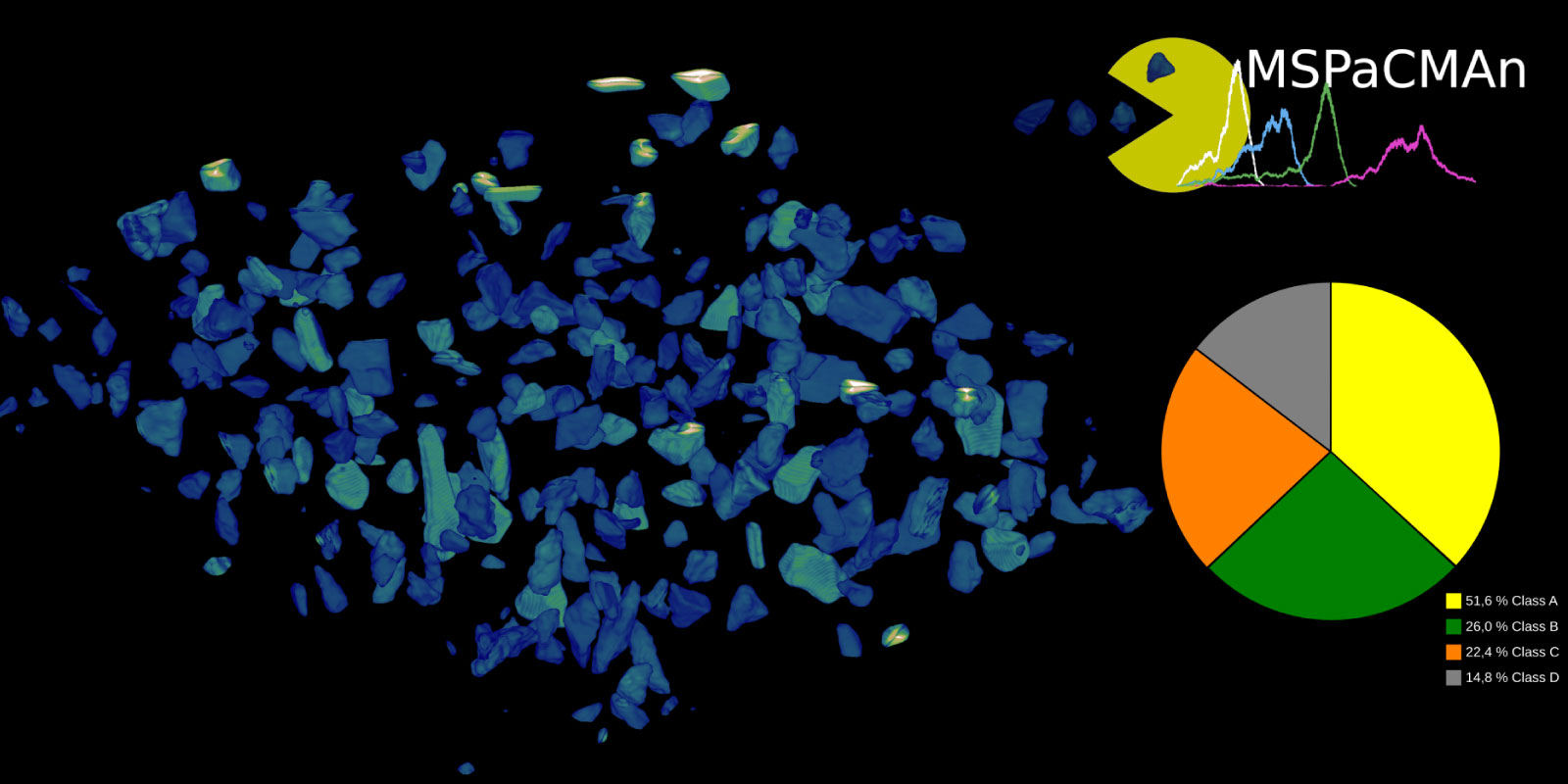MSPaCMAn

MSPaCMAn is a workflow for quantifying mineral phases in 3D images of particulate materials using X-ray computed micro-tomography, designed to minimize imaging artifacts. It involves dispersing particles into samples, optimizing image processing to label individual particles, and identifying phases at the particle level by interpreting the grey-values of all voxels within each particle.
This method also incorporates particle geometry and microstructure for classification, improving phase classification accuracy, increasing the number of detectable phases, enabling the quantification of smaller grain sizes, and allowing for the measurement of individual particle statistics in 3D.
In this project, the approach is extended to a semi-automated image processing workflow, aiming to 1) reduce the analysis time per sample from weeks to less than one day; 2) create a user-friendly analysis that can be used by engineers who are not 3D imaging experts.


